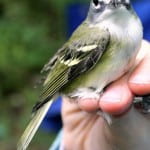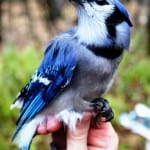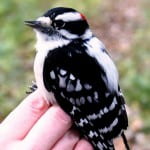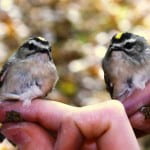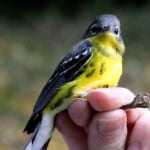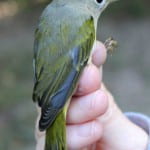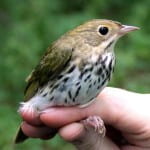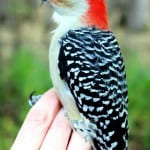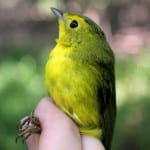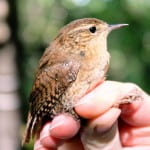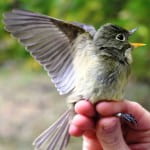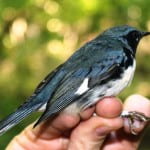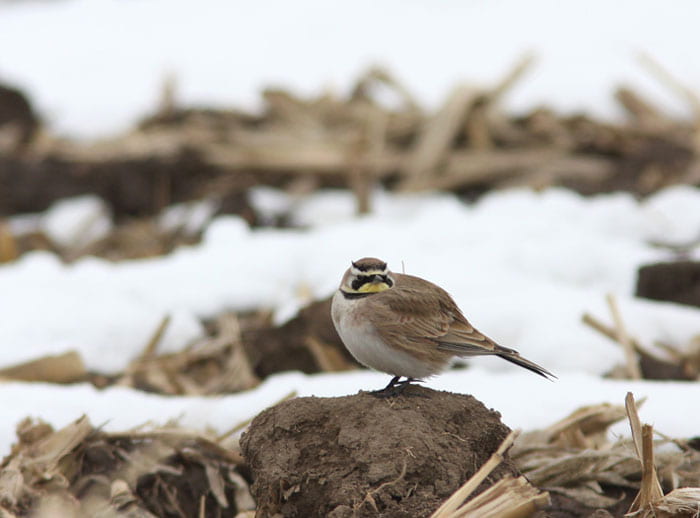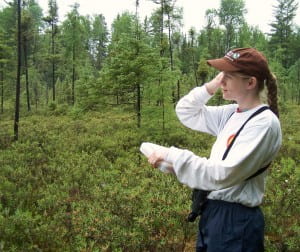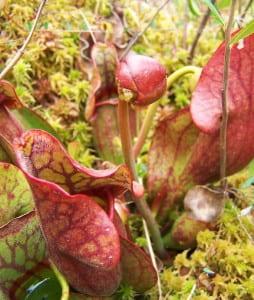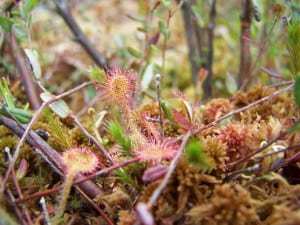Almost 80% of songbirds that nest in Wisconsin are migratory, many traveling vast distances every spring and fall. Songbirds typically migrate at night and seek out patches of natural habitat at daybreak where they can rest. These areas must provide shelter from storms and predators, as well as provide high quality food resources so the birds can refuel for the next leg of their journey. Unfortunately, stopover habitats are becoming scarcer as natural habitat is converted for human use and landscapes become more fragmented.
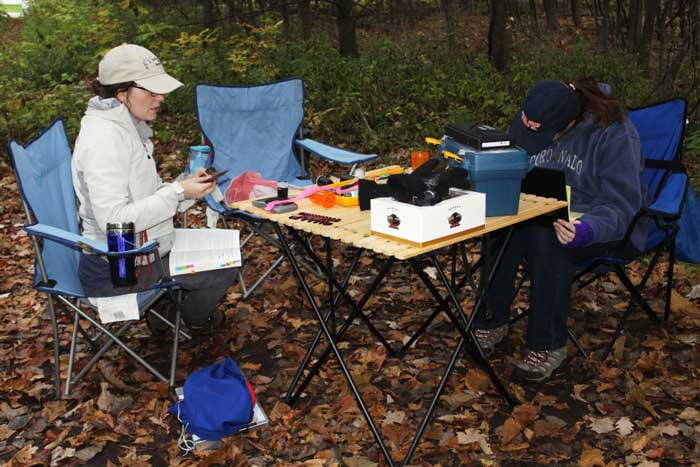
Stopover habitats are a critical resource for these birds, but the ecology of birds during stopover periods is not well understood. And because increasingly large numbers of birds congregate in these fragmented habitats, ecological interactions can be intense. This may because there are many species interacting under highly variable environmental conditions. Graduate student Stephanie Beilke is banding birds to learn more about how migratory birds are affected by the type of stopover habitats they choose. Her research on migratory bird assemblages will provide insights into the resource demands and evolutionary history of migratory birds and will ultimately provide a better understanding of stopover site ecology and help guide the conservation and protection of Great Lakes coastal habitats for migratory birds.
Point au Sable offers a perfect opportunity to learn more about stopover ecology. It is a mosaic of different natural habitats including lowland and upland forest, wetlands, and Great Lakes beach. Since the late 1990s, migrating passerines have been studied at Point au Sable Natural Area, a peninsula that juts out into the lower Green Bay, just north of the University of Wisconsin-Green Bay campus. Through the years, Point au Sable has experienced many ecosystem changes including invading exotic vegetation, declining water-levels in the Bay of Green Bay, and ongoing habitat management and restoration. Despite these changes, point counts and mist-netting operations conducted by UW – Green Bay researchers have shown that large concentrations of avian migrants use Point au Sable during both spring and fall migration
This fall Stephanie and her group of volunteers set up nearly invisible finely-meshed mist nets in openings where birds are likely to fly through. Birds fly into the nets and become entangled. Trained technicians collect the birds, and then take measurements and either read the existing band or place a new a U.S. Geological Survey aluminum numbered band on the bird’s leg. Volunteers help to set up and take down the nets, alert the technicians to new arrivals, and help to record data collected. In this study netted birds will be weighed and scored for visible chest fat. Different length and width measurements are also collected. Technicians work quickly and carefully to limit the amount of stress endured by the birds.
They banded birds on 25 different days at two locations at Point au Sable Natural Area. Six mist nets were set up in either coastal shrub or in upland forest. The average capture rate was 40 birds per net, but one net in the coastal area caught 79 new birds as well as 3 recaptured birds. Forty-seven different species were banded, including 100 Tennessee Warblers. They also captured large numbers of White-throated Sparrows, American Robins, Hermit Thrushes and Golden-crowned Kinglets.
Some of the species they caught were “firsts” for the project, meaning they had never been captured before, including Black-billed Cuckoo, Blue-headed Vireo, Purple Finch, and Winter Wren. The crew also banded one Yellow-bellied Flycatcher on October 12, which, according to the Wisconsin Society for Ornithology, makes it a record late observation for the state. Most Yellow-bellied Flycatchers have migrated south by the end of September.
Stephanie will be banding again Spring 2014, stay tuned to the blog or like us on Facebook to find out how to volunteer.
Some of the birds captured in Autumn 2013

